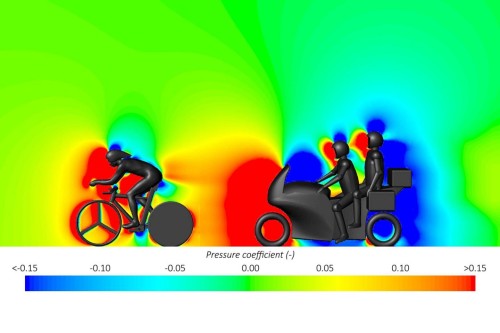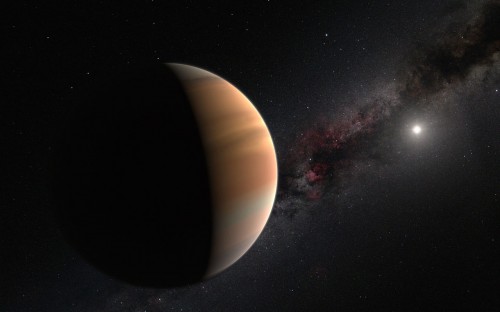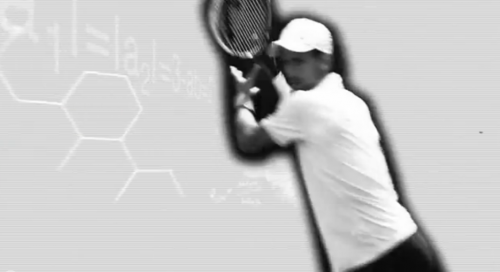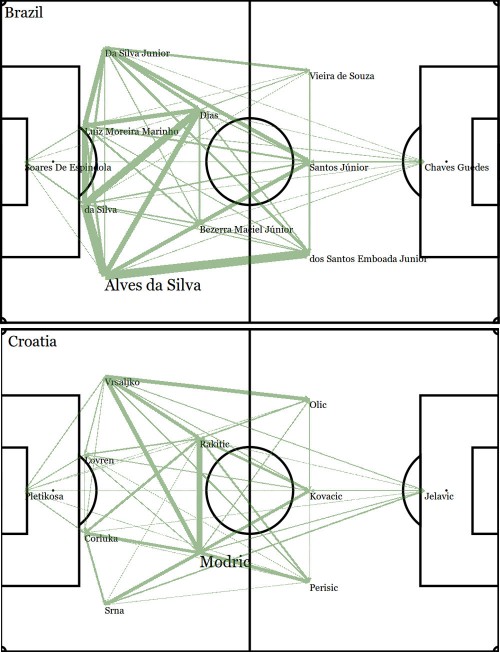Tag archives: sport
Cassini’s emotional countdown, Steve the light show, shooting hoops ‘granny style’
By Sarah Tesh
This week has seen the beginning of Cassini’s Grand Finale. The rather dramatically named final mission for the NASA spacecraft involves 22 dives between Saturn and its surrounding rings. Once complete, Cassini will crash into the planet’s atmosphere in what the scientists hope will be a flurry of data gathering. The spacecraft has already sent back stunning images of storms in Saturn’s atmosphere from its first dive on 26 April. After 20 years since its launch, the mission to Saturn’s system has been a masterclass in space exploration, and NASA highlights the best bits in this theatrical video. The short film, reminiscent of Star Trek, could be considered a bit cheesy, but it’s hard not to form an emotional attachment to NASA’s loyal Cassini as you join in the countdown to its final demise.
View all posts by this author | View this author's profile
The hi-tech way to cycle more easily

Easy does it: this computer simulation of a motorbike following a cyclist shows a drop in pressure (red area) that cuts the aerodynamic drag on the cyclist by almost 9%. (Courtesy: Eindhoven University of Technology)
By Matin Durrani
Some of the world’s top cyclists are gathering today in the Dutch city of Apeldoorn to take part in the opening stage of the 2016 Giro d’Italia – the 99th running of a race that is one of the three big European professional cycling stage races, along with the Tour de France and the Vuelta a España.
Today’s stage is a short (10 km) time trial and will be followed by two, longer stages in the Netherlands before the action moves to Italy, where the race is due to end on 28 May in Turin. Now, even if you have no interest in cycling – and mine stretches no further than tootling back and forth to work each day – one thing that looks truly scary about professional cycle races such as the Giro d’Italia is the phalanx of motorbikes following in the wake of the cyclists.
These motorbikes can carry everyone from TV camera operators and press photographers to doctors, traffic managers and support staff, all keen to keep as close as possible to the action. Now, however, researchers in the Netherlands and Belgium have discovered that having a motorbike right behind a cyclist could give the latter an advantage. Led by Bert Blocken, a physicist in the Department of the Built Environment at Eindhoven University of Technology, the study reveals that a motorbike at a distance of 25 cm behind a cyclist can cut aerodynamic drag on the person on the bicycle by almost 9%. That amounts to a reduction of almost 3 s for every kilometre travelled. (more…)
A galaxy for a Galáctico and astronomers weigh in on a famous kiss

A galaxy far away: this false colour image of CR7 was taken by several telescopes. (Courtesy: David Sorbal et al.)
By Hamish Johnston
Over the past decade or so the Real Madrid football club has acquired a string of high profile players dubbed the “Galácticos”. Now the most expensive of these footballers – the Portuguese forward and Real Madrid number 7 Cristiano Ronaldo – has a distant galaxy named after him. The galaxy is dubbed “CR7” and was discovered by a team of astronomers led by David Sobral of the University of Lisbon using several different telescopes.
CR7 actually has two meanings, the second being “COSMOS Redshift 7”. COSMOS refers to the Cosmological Evolution Survey, which is using a number of telescopes to search for very old galaxies.
View all posts by this author | View this author's profile
Deflategate, DIY particle detection and an ode to Beagle 2
By Hamish Johnston
Loyal sports fans often need a reason for losing beyond “their team was better than ours”, and the latest blame-game in American football comes with a twist of physics to it. The run-up to this year’s Superbowl is no exception. Some disgruntled Indianapolis Colts fans claim that the New England Patriots had taken advantage of deflated footballs to make their decisive 45-7 victory on 18 January, which sends them to the championship game.
View all posts by this author | View this author's profile
Molecular footballs, knotty headphones and a naming contest for exoplanets

Is this exoplanet more of a Joanne than a Derek? You could soon be casting your vote to name 305 explanets. (Courtesy: IAU/M Kornmesser/N Risinger)
By Hamish Johnston
With the final two matches of the FIFA World Cup to look forward to this weekend, I thought I would sneak one more football-related story into the Red Folder. Over on the arXiv blog, there is a nice commentary about the topological nature of World Cup balls through the ages. Why? Well, two chemists in Taiwan have worked out a way to create a carbon-based molecule with the same shape as the football currently being used in the tournament in Brazil. Called the Brazuca, the ball is made from six panels that each have a four-leafed clover shape. Together, they form a structure with octahedral symmetry.
View all posts by this author | View this author's profile
A network analysis of the FIFA World Cup
By James Dacey
The FIFA World Cup is under way in Brazil as the national teams from 32 nations battle it out on the pitch for the most prestigious prize in football. It is also an exciting month for football fans across the world as everyone suddenly becomes an expert on the game. Offices, bars and cafes around the world echo with the sound of post-match analysis.
This post-match dissection has now been taken to another level by a pair of computer scientists at the University of Pisa in Italy. At the request of Physics World, Paolo Cintia and Luca Pappalardo have carried out a network analysis of the opening match of the tournament, which saw the hosts Brazil defeat Croatia by three goals to one. Cintia and Pappalardo have viewed the match as if it were an evolving network where players represent nodes that interact by passing the ball to each other along “edges”.
View all posts by this author | View this author's profile
A day in the life of an astronaut, Hawking’s football conclusions, politics and science and more

“Good morning world” (Courtesy: Tim Dodd)
By Tushna Commissariat
For most of us, the life of an astronaut is one of excitement and adventure. Indeed, the mere thought of being a “real live astronaut” brings out the gleeful inner child in many, and photographer Tim Dodd is much the same. After purchasing a Russian high-altitude space suit from an online auction website, Dodd put together a series of photographs titled “A day in the life of Everyday Astronaut”, my favourite of which you can see above. Do take a look at the rest of the excellent series on Dodd’s website and follow him on Instagram for even more of the same.
View all posts by this author | View this author's profile
Intelligent life on a doughnut, how cats and skiers spin, a marriage made at CERN and more
By Hamish Johnston
There’s definitely an educational vibe to this week’s picks from the Red Folder, which begins with Tanner Higgin’s selection of “Five apps that test your physics skills“. Writing on Mind/Shift, a website based in California and dedicated to learning, Higgin highlights Crayon Physics Deluxe, which allows users to draw physical objects and then let gravity and other physical effects take over. Also featured is Amazing Alex, which allows users to combine more than 30 different household objects to create fantastical Heath Robinson/Rube Goldberg contraptions.
View all posts by this author | View this author's profile
Can Andy Murray give graphene a boost?
By Matin Durrani

Novak Djokovic uses a Head tennis racket containing graphene.
It has become a cliché to call graphene the “wonder material” because of its incredible physical and electronic properties – this 2D honeycomb of carbon atoms is not only the strongest ever discovered, but also the stiffest, being able to sustain a current density a million times that of copper.
Having such great attributes is all well and good if you’re a researcher who’s fascinated by the subtleties of graphene’s electronic properties such as its lack of a band gap – but what if you’re a hard-nose business executive? Graphene will only be any good if it can help you to sell a product that’s somehow better than what’s already on the market and if it can at also make the company money at the same time.
View all posts by this author | View this author's profile
